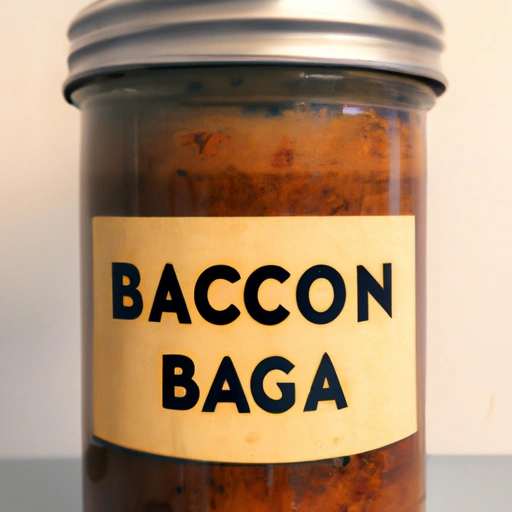Bacon Fat
Description

Bacon fat, also known as bacon grease, is the rendered fat that cooks off of bacon during the frying process. This ingredient is highly prized for its rich, smoky flavor and versatility in cooking. In different units of measurement, bacon fat can be measured in grams, ounces, tablespoons, and teaspoons, catering to both the metric system used in European countries and the customary units familiar to American cooks. For instance, a recipe might call for 30 grams, 1 ounce, or 2 tablespoons of bacon fat.
Common uses
Bacon fat is widely used as a cooking fat or flavor enhancer in various cuisines. It is often used to sauté or fry other ingredients, to add a depth of flavor to soups, stews, and sauces, or to make pie crusts and pastries flaky and rich.
Nutritional value
Calories
Bacon fat contains approximately 115 calories per tablespoon (around 13 grams).
Protein
While bacon fat contains trace amounts of protein, it is not considered a significant source.
Fat
One tablespoon of bacon fat typically contains about 12.8 grams (or 0.45 ounces) of fat, which includes saturated fats, monounsaturated fats, and polyunsaturated fats.
Carbohydrates
Bacon fat is carbohydrate-free.
Vitamins
Bacon fat contains small amounts of vitamins D and E but is not a substantial source of vitamins.
Minerals
The mineral content of bacon fat is minimal, but it may contain traces of minerals such as selenium and phosphorus.
Health benefits
Bacon fat contains monounsaturated fats, which have been associated with improved cholesterol levels and overall heart health when consumed in moderation. Additionally, the fat-soluble vitamins present in bacon fat can aid in nutrient absorption.
Potential risks
The high saturated fat content of bacon fat can contribute to increased cholesterol levels and heart disease risk if consumed in large amounts. It is also high in calories, which can lead to weight gain.
Common recipes
Bacon fat can be found in recipes for cornbread, collard greens, biscuits, and gravy. It is also used to add flavor to beans, roasted vegetables, and popcorn.
Cooking methods
It is typically used in frying, roasting, and baking, imparting a unique flavor that cannot be replicated by other fats.
Pairing with other ingredients
Bacon fat pairs well with savory dishes, complementing the flavors of garlic, onion, cayenne pepper, maple syrup, and apple.
Summary
Bacon fat is a flavorful cooking fat with a rich history in culinary traditions around the world. It offers a unique taste to a variety of dishes but should be used in moderation due to its high saturated fat content and caloric density. Bacon fat can be measured in both metric and customary units, making it accessible to cooks in different regions.